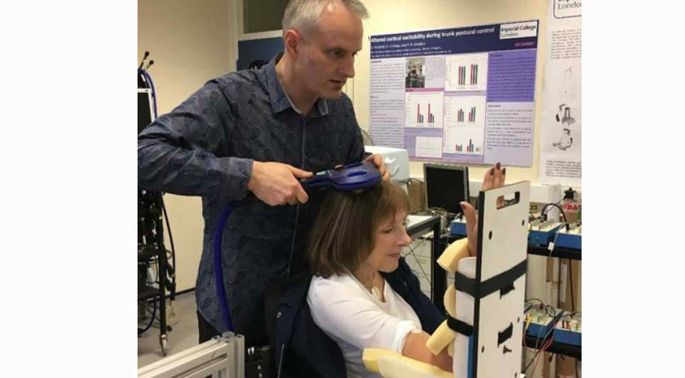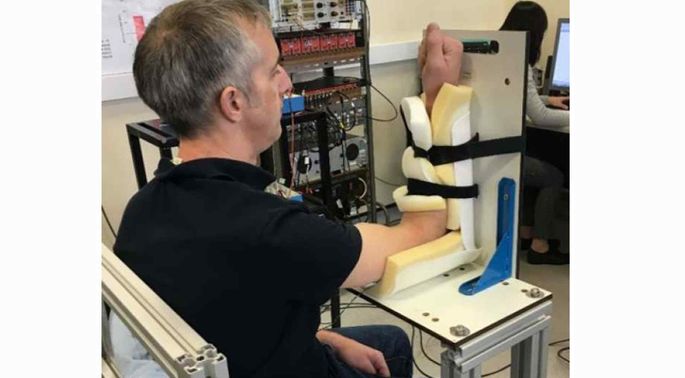Trunk Control
To research the use of arm movements for the Spinal Cord Injured to improve trunk control
Dr Paul Strutton (Nick Davey lab, Imperial College London) in collaboration with Dr Angela Gall (London Spinal Cord Injury Centre, Royal National Orthopaedic Hospital NHS Trust, Stanmore).
Funded by the INSPIRE Foundation.
REC REF: 16/WM/0091
STUDY OBJECTIVE
The overall aim of this project is to investigate the possibility that exercise-type movements of the upper limbs provide a basis for improving trunk control. Firstly, we wish to establish if the positive interactions between arms and trunk we have observed in healthy subjects are evident in spinal cord injured (SCI) subjects. Secondly, we wish to establish, should this be the case, if repeated interactions during exercises results in any lasting functional improvements in the trunk.
OVERVIEW
A significant proportion of people with spinal cord injury (SCI) have difficulties controlling the muscles of their torso which results in problems with sitting upright and stabilizing the upper body. The detrimental effects of this include limiting the use of the arms to aid with a number of activities of daily living such as feeding, dressing, weight-shifting, transferring between wheelchairs and bed/toilet and using wheelchairs. Indeed, individuals with SCI rank restoration of trunk stability as one of the highest priorities to enhance quality of life and further research into how this can be achieved is required.
It has been shown that the trunk muscles become active with almost any movement of the body, underlying the importance of the trunk as a stabilizer. Our research in healthy people has shown that movements of the arms can “excite” the neural pathways involved in controlling the trunk muscles1, these can be as simple as bending the elbow, or lifting the arms up to the shoulder. The question arises therefore, if this is observed in SCI people. If so, is it possible to improve the functioning of the trunk by using simple exercise of the arms?
This project aims to answer these questions by carrying out a number of experiments:
- Firstly, we will use brain stimulation and recording of muscle activity to assess how excitable the pathways controlling the trunk muscles are when subjects contract muscles of the arms.
- Secondly, we will see if any effects outlast a short session of exercise-based repetition.
- Thirdly, we will assess if there are any associated functional improvements, such as improved balance when sitting, greater reaching capacity and better hand function/dexterity.
The results of this work could have wide ranging implications for SCI subjects. If it is shown that simple exercises of the arms can induce changes in the pathways controlling the trunk muscles and improve trunk function, this could have a positive impact on a number of activities of daily living including improved upright sitting and safer transfers. Further, a more stable trunk may allow better use of the arms to carry out daily tasks (e.g. wheelchair use) as well as leisure activities (e.g. computer use, driving and sports), potentially improving overall health. Additional health benefits could be envisaged (e.g. reduced long term spinal deformity, reduced back pain, increased breathing capacity). Finally, the beneficial effects could ultimately lead to greater independence and an enhanced quality of life.
If you have any questions about the study, please contact Paul Strutton (p.strutton@imperial.ac.uk)
RELATED WORK
1. Chiou SY, Gottardi SE, Hodges PW, and Strutton PH Corticospinal Excitability of Trunk Muscles during Different Postural Tasks. PLoS One 2016; 11: e0147650

Principal Investigator Dr Paul Strutton applies a magnetic stimulus to the motor area of the brain controlling the trunk.

Participant undertaking upper limb contractions during the experiment.


